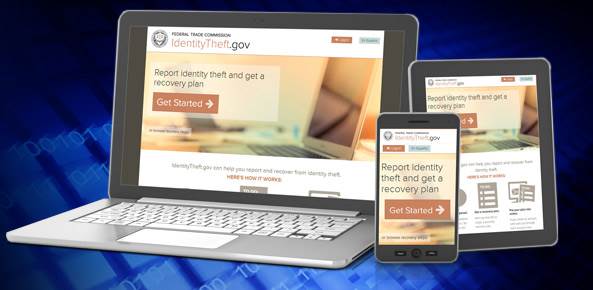The Federal Trade Commission (FTC) is finally getting serious about helping victims of identity theft, launching a revamped Web site — IdentityTheft.gov — where victims can get personalized identity theft recovery plans at no cost.
Because the Web site integrates with the FTC’s consumer complaint system, customers whose identities have been stolen can file complaints and download the recovery guide in the same same mobile-friendly portal. The guide includes steps on how to gather the information they’ll need to file police reports as well as notify the IRS and the credit bureaus.
“Millions of Americans have been victims of identity theft, and until now, there has not been a single site where they can quickly file an official complaint and then get real, personalized help,” said FTC Chairwoman Edith Ramirez. She said the aim of the site is to empower victims to fight back.
The Troubling Statistics
The statistics are troubling. The FTC received over 490,000 consumer complaints about identity theft in 2015 alone, a 47 percent increase over 2014. And according to the U. S. Department of Justice, 17.6 million Americans were victims of identity theft in 2014.
The improved IdentityTheft.gov offers a slew of new features to help victims navigate the recovery process as easily as possible. For example, the site guides consumers through the step-by-step checklist that’s most appropriate to the type of identity theft they’ve experienced. Getting information stolen from a retailer’s database, for example, may require a different recovery process than having a wallet stolen at a restaurant.
Travis Smith, security researcher for Tripwire, has some positive thoughts about the FTC’s enhanced Web site. He told us when it comes to identity theft, consumers are often left in the dark without the answer to an important question: What’s next?
“The new FTC service helps consumers answer that question and respond to potential identity theft,” Smith said. “The service, though, is still reactionary, and consumers will need to continuously be on high alert to monitor their personal data [in] the digital world.”
A Step-by-Step Guide
Perhaps one of the most helpful aspects of the revamped site is the automatic generation of affidavits and pre-fill forms and letters that victims can send to police, debt collectors, businesses, IRS and credit bureaus.
If consumers run into obstacles during the recovery process, the site will suggest ways around those obstacles. After victims submit reports to the site, they will get follow up e-mails prompting them to continue with any necessary steps toward recovery.
Given the large and growing Hispanic population in the United States, the FTC is making a mirrored site available in Spanish at RobodeIdentidad.gov. The sister site allows Spanish-speaking consumers to view documents, such as automatically generated letters, in their native languages, then print them in English before they send them to their creditors and other parties.
“Data wants to be free, it tends to find the cracks in organizations defenses and leak out,” Travis said. “Knowing this, consumers should use automated and manual monitoring tools, such as credit monitoring services or looking for unauthorized charges, to look for suspicious behavior.”
Image Credit: FTC (IdentityTheft.gov).







